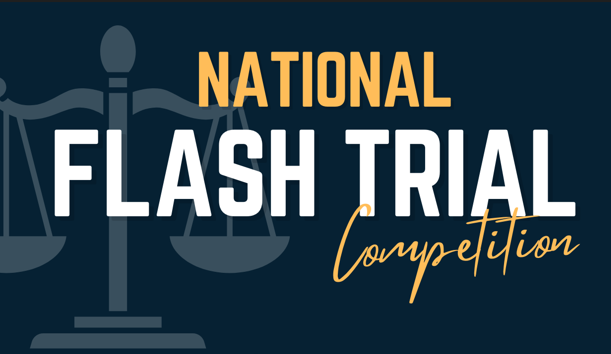
Please see the information below to get a high-level overview of the major differences between flash trials and regular trial competitions. While you should of course read the rules, this will hopefully highlight the differences:
- Obviously, the flash trial format: Teams will have 45 minutes with the case to prepare for 1 v. 1 rounds and 60 minutes with the case to prepare for 2 v. 2 rounds. Rule III.B.
- 2 v. 2 and 1 v. 1 rounds: Half of the preliminary rounds will be 2 v. 2 (first two preliminary rounds); half of the preliminary rounds will be 1 v. 1 (next two preliminary rounds), with each advocate acting as first chair for one round of each format. For more explanation, see Rules 1.E-H.
- Witness prep time: Unlike in other competitions with live witnesses, teams are not limited to 15 minutes to prepare their witnesses. Instead, teams can prepare their witnesses for as much or as little of their prep period (45 minutes in 1 v. 1 rounds and 60 minutes in 2 v. 2 rounds) as they like. Coaches may also participate in witness prep. Witnesses, however, cannot assist teams with theory or strategy. Rule III.B.3-7.
- Meet and confer: It is mandatory for teams to meet and confer in the 15 minutes between the prep period and the trial start time. Teams must disclose any prepared demonstratives and may discuss stipulations or motions in liming. But at the conclusion of the meet-and-confer period, teams must be ready to represent to the judge that both sides are ready to proceed to trial without undue delay (i.e., that teams have ensured that any motion for other issues that teams intend to raise pre-trial are actually in dispute). Rule III.C.2.
- Motions in limine: Teams are limited to one motion in limine per trial. Rule III.C.5.
- Trial time limits: In 1 v. 1 rounds, all of a team’s scored pieces must be no more than 30 minutes. In 2 v. 2 rounds, all of a team’s scored pieces must be no more than 45 minutes. Rules III.C.2-3. If a team runs out of time but has a piece (or more) remaining, they will get 1 minute for each remaining piece; there is no discretion to add more time. Rule III.D.1-3.
- Recross examination: The rules do not limit the number of redirect and recross examinations permitted, but each succeeding examination is limited to the scope of the one that preceded it. Rule III.E.1.
- Mid-trial motions: Mid-trial dispositive motions, such as motions for a directed verdict, JMOLs, or judgments of acquittal are not permitted. Rule III.E.4.
- Breaks: Because the rounds are shorter than other competitions, breaks customarily will not be allowed except in case of emergency. Rule III.E.5.
- Reasonable inference rule: On direct examination witnesses are permitted to testify to facts that are reasonable inferences from their materials, and on cross-examination witnesses can invent facts if the cross-examiner’s question calls for such an invention. Rule III.F.
- Demonstratives: These are allowed in physical or electronic form (via Zoom screen-share). If they are created at any time prior to when they are used, they must be disclosed to the opposing team before they are used. Rule III.G.